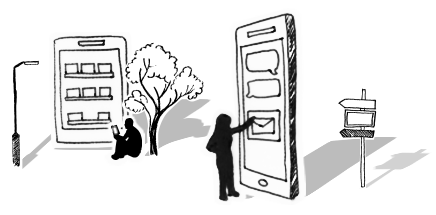




Top Tips on Implementing Gamification
The conversation about gamification starts in the boardroom. But what if you’re a project manager tasked with implementation?
Gamification needs careful change management, not least because you’re dealing with stakeholders with various learning needs and behaviours, and it will represent a big change for some of them.
Many people might like the idea of collaborating and having total transparency about their activities and achievements but others might not be quite so used to sharing. Here are some tips for successful delivery to your people.
Change Readiness
- Establish core benefits and success measures
Most important is to make all of the features meaningful to the business. This is a conversation had before implementation admittedly but if the rewards don’t align with user and business need then the project manager will find it difficult to get sustainable user adoption. Features like badges, leader boards and points need to be applied to the right objectives. Ultimately they should help users progress to personal and business goals that they can see are meaningful, support their performance and solve business problems.
- Communication channels
What existing platforms and channels are there? Will you only use social, collaborative applications or do the needs of stakeholders demand multi-channel comms?
- Cultural analysis
Gamification commonly involves sharing tools and collaborative technology which enable competition, ideas and progress sharing. Scope out the social collaboration and learning habits of your users. Social media and collaboration tools aren’t essential but their use will hugely support gamification across the organisation. You may encounter resistance to the term ‘gamification’. Some senior stakeholders may feel that the term trivialises the concept it is associated to. Perhaps consider rebranding gamification as something like ‘enhanced engagement’ to get past this resistance.
- Map your stakeholders and do a impact needs analysis
Who are your stakeholders? What are their training needs? Are there silos or other cultural norms which will impede progress? You can’t change the culture overnight through your project but you can tailor the way you communicate with people based on a thorough knowledge of their working patterns and preferences.
During implementation
- Communicate
What’s the story behind the implementation and in what way does gamification support the vision of the future state of the company? How does it help the individual to do their job and align to the needs of the business? Consistently communicate the value to the user. Give the context and the reasons why and keep it simple. Consider unifying comms and gamification with branding to engage users and create impact.
- Learning and support
Much of the support learning delivery involves community management; introducing features and benefits and sharing progress as well as providing ongoing support:
- Outline the benefits, share results, reconfirm the business goals and the benefits and the problems solved
- Get people talking to each other and let them see how they can help to solve each other’s problems through gamified learning
- Encourage managers to participate and lead their own teams in games
- Encourage pairing and mentoring between colleagues
- Measurement
Most apps contain back end dashboards. It’s an obvious one but look at how often people discuss, share and download. Offer ongoing support and encouragement by maintaining an L&D presence in the form of community managers who can celebrate wins, demonstrate benefits and keep communication going.
These are some of the things to consider for a project manager or change manager faced with gamification. Careful change management with a focus on your people will support successful implementation. I’d welcome your thoughts on this. Have you incorporated gamification and how did it go?
To get the latest change tips, advice and guidance directly to your inbox, sign up to our monthly Business Change Digest.
